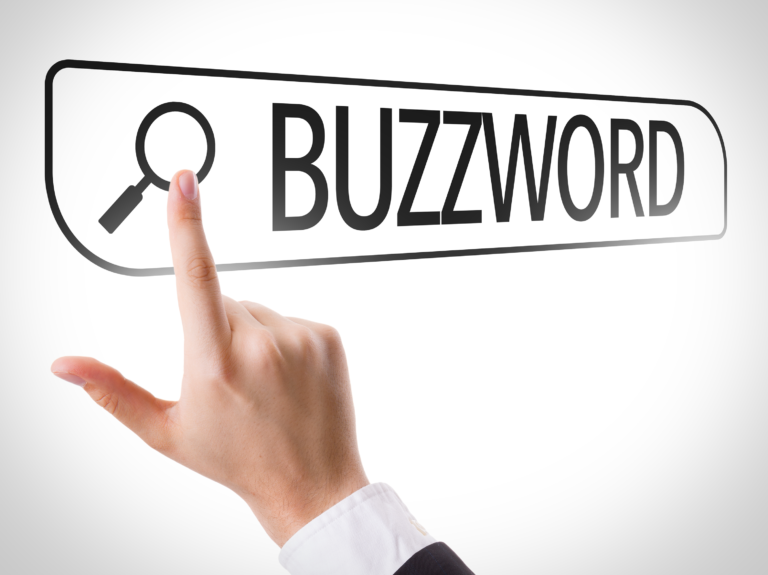Article • February 4, 2021
Buzzword Bingo: L&D Tech Buzzwords and What They Mean

Any field of expertise is bound to have its fair share of buzzwords—those terms or phrases that become highly fashionable for some period of time before fading away. Inevitably, they get replaced by newer buzzwords and the cycle never seems to end. Learning and Development is no exception. In fact, our field might be better than most at coming up with new buzzwords!
We could write an entire book on L&D-related buzzwords, but our goal here is considerably less ambitious than that. Instead, we’d like to focus on a few terms that relate to learning technology, with an eye towards sorting out how those terms have changed over the years. Hopefully, we’ll clear up some confusion in the process.
From e-learning’s humble beginning…
In general, e-learning is a term typically used to refer to learning that is enabled by electronic technologies. If you rewind a quarter of a century, back to the mid-1990s, the term e-learning was coined to describe learning that involved a computer in any form. Back then, it was the height of the dot-com boom, and people were tacking “e” onto everything: e-mail, e-commerce, e-research, E-Trade, e-tailing, e-filing, and so on. It basically referred to the electronic version of to whatever the “e” was added.
It was the same with e-learning. Initially, the term referred to any form of electronically-enabled learning, which might include computer-based offline resources (e.g. CD-ROM-based programs) or online learning. For many years, e-learning as a term retained its catch-all status even as the “e” field branched out into increasingly specialized approaches.
Today, the term e-learning can be polarizing. It can be a bit of a turn-off for some, because it hearkens back to experiences that were just glorified slide presentations that people clicked through with a quiz at the end (not the most effective way to facilitate learning). For others, it generates enthusiasm and promotes effective learning practices. It is a skillset that is promoted and in high-demand: the e-learning designer and developer.
Ultimately, e-learning is still a relevant and popular term that is intended to broadly describe both synchronous and asynchronous learning enabled by technology. Its most popular use is to describe self-paced learning that is formalized and often delivered through a learning system such as an LMS.
A collection of “specialized” buzzwords
Now, a broader collection of specialized buzzwords are available to help us distinguish between different forms of…well…e-learning. And that has caused some confusion, so we’ll attempt to clear up some of that.
Digital Learning
Digital Learning is sort of like today’s e-learning. It’s a broad term that refers to various forms of learning where the delivery is facilitated via digital technologies and mediums. Because of the broad nature of this term it is often positioned as a learning strategy. It can refer to learning delivered via a web browser, e-mail, a learning management system, or even offline digital media. That learning can be self-directed, but it doesn’t have to be.
Virtual Learning
Many people use “virtual learning” to refer to any form of online learning, where the internet is required. However, these days, its definition has morphed a bit, primarily referring to live, synchronous learning approaches, such as live webinars, virtual instructor-led training (VILT), or other forms of synchronous learning that’s enabled by online technologies (whether instructor-led or not). It’s fair to say that all virtual learning is digital, but not all digital learning is virtual. Confused?
Platform-Based Learning
Platform-Based Learning refers to any form of digital learning that must be accessed via some type of portal, LMS, or some other system that integrates various services like data analytics and assignment management. It’s not one you often hear, but when you do it is usually meant to call attention to the system functionality nuances and services that differentiate the experience. You might hear people refer to a learning curriculum or program as a “learning platform.” That’s not a correct usage of the term, as the “platform” is the digital system that hosts the learning experiences and the portal through which they can be accessed. The curriculum is delivered through the platform. In the end, this term is a nuanced way to talk about digital and virtual learning experiences.
Where do we go from here?
Most assuredly, digital learning technologies will continue to expand and proliferate. As they do, more buzzwords will be developed to describe them.
However, other buzzwords not related to technology will also continue to blossom in the field of L&D. Just think about synchronous and asynchronous learning. A few years ago, nobody outside of specialized L&D circles used those terms. And even then, they didn’t use them much. Now, everybody is using those terms…a lot. Thanks to COVID-19, schoolkids all over the country know the difference between synchronous and asynchronous learning, as their schools now routinely use those terms to describe their pandemic-altered approaches to education.
In future articles, we’ll tackle other buzzwords and digital learning nuances that are emerging and explore them with you.